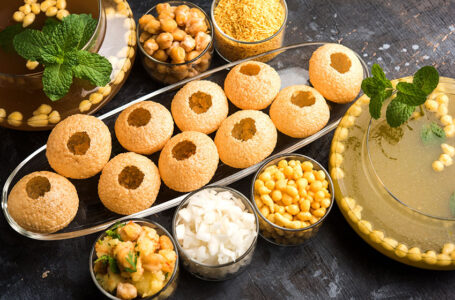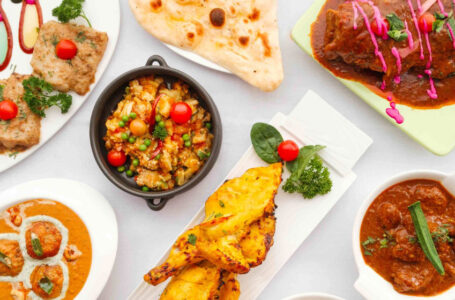Unique Indian desserts that you haven’t tried before
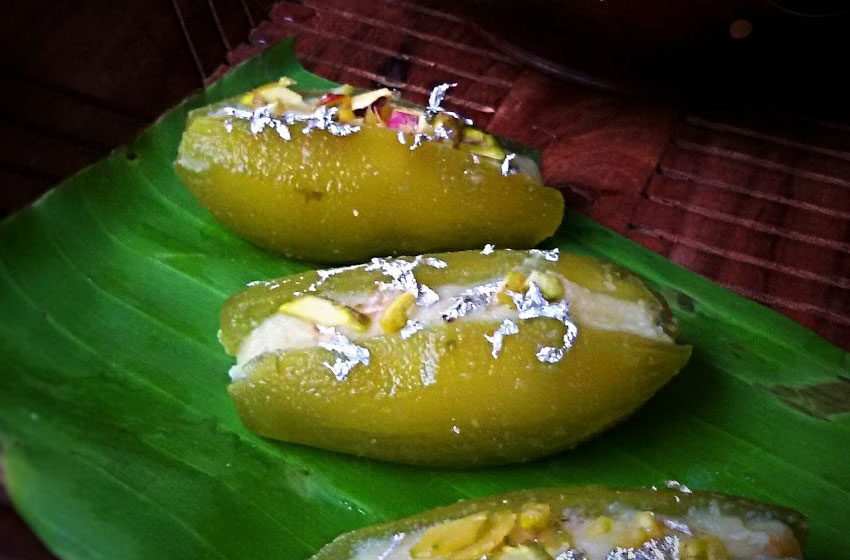
We all tend to save some space after having dinner or lunch for dessert; since the earliest times, people have followed the customary tradition of having something sweet after a meal. However, you might have heard dieticians and fitness experts advising against eating anything sweet because sugar is a source of empty calories without any nutritional value.
Furthermore, sugar has no function in our bodies other than getting accumulated in the fat cells and causing weight gain. Yet, despite the apparent adverse health effects, we cannot stop ourselves from indulging in some sweet and delectable desserts. In addition, many reports suggest that sugar cravings are primarily due to physiological reasons rather than physiological.
The crucial thing is to eat sugary delights in moderation which could be a challenge given that India has such diversity when it comes to sweets. Hence, let’s take a look at the different sweet dishes that you can find across India with their distinct taste, texture and flavour.
Nap Naang (Black Rice Pudding)
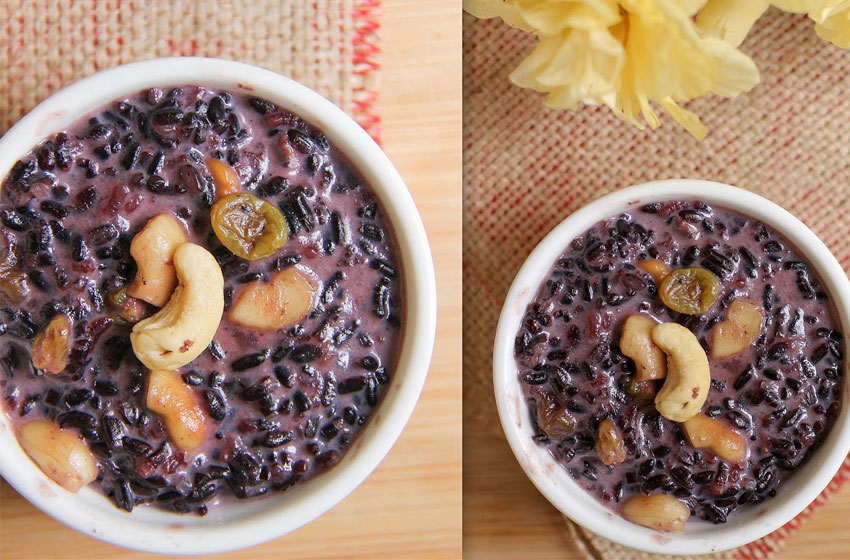
Nap Naang is a rice pudding from the north-eastern Indian state of Nagaland in India; the dish is made with sticky black rice, which has a natural nutty flavour. The first step is to soak the rice overnight or for four to six hours in the water; next, drain the water from the rice and pressure cook the rice with one cup of water and two cups of milk. Let it cook until you hear 4 to 5 whistles( about 15 to 20 minutes), then let the pressure release.
Pour the cooked rice into a pan and add sugar or jaggery; let it come to a boil and then simmer for about five minutes. Then, add half a cup of milk and mix well; let it simmer till the pudding reaches a smooth consistency; after that, let it cool at room temperature, or you can refrigerate and serve to your guests.
PS. you don’t need to add any extra spices to the pudding as it already has a distinctive flavour, thanks to the nuttiness of the rice.
Parwal Ki Mithai (Pointed gourd sweet)
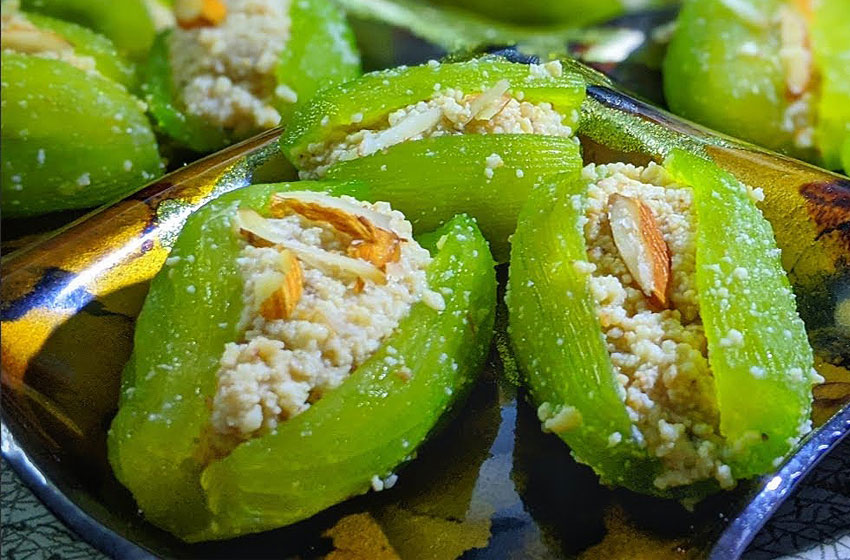
Pointed gourds are referred to as parwal in Hindi, a vegetable often cooked as a fried item or in a curry. However, in Bihar, parwal is used to make a delectable dessert using sweet-khoya based filling. The first step in the recipe is to wash and peel the pointed gourd and cut them from the centre lengthwise. Then, carefully remove the seeds without completely tearing the gourd into two halves, merely emptying the gourd.
Heat some water in a saucepan, and when the water starts to boil, put the parwals and let them simmer for about three to four minutes. Get them off the heat, cover the pan with a lid and set it aside for half an hour. After half an hour, strain the water from the gourds.
In another saucepan, add water and sugar and let it boil until it becomes a syrup, stir the water continuously so that the sugar dissolves in the water. Next, drop all the parwals in the sugar syrup and let it boil till it changes its colour; flip them on the other side, turn off the heat, cover the pan and leave it for one hour to soak up all the sweetness. Next, for the filling, roast two to three cups of khoya(solidified milk) in a wide pan on a medium flame till it turns light pink. Let it cool; grind a handful of almonds, cut a few pistachios, add ground almonds, cardamom, and sugar into the roasted khoya, and mix them well.
Take out the parwals from the sugar syrup and place them on a plate; stuff each parwal with the filling and press the filling with light hands, so it settles down inside the parwal. Follow the same process with the rest of the pointed gourd and sprinkle some chopped pistachios over them.
Parwal ki mithai is a perfect sweet dish for those who prefer to eat mild and savoury desserts.
Adhirasam
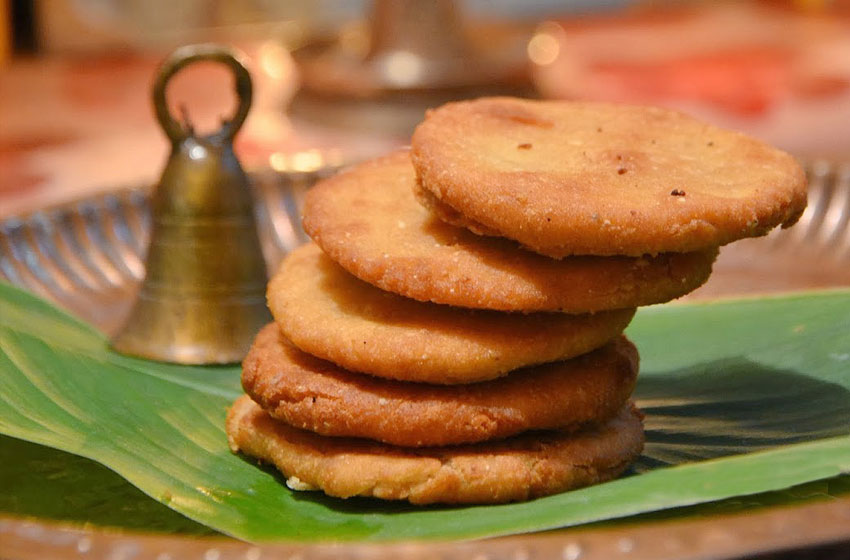
Adhirasam is a pastry that dates back to 16th century India and is referred to by different names across the country, like Sirsa in Chhattisgarh, Anarsa in Marathi and Arisa pitha in Odia. The recipe first calls for soaking short-grained rice for two hours, draining the water, then spreading the rice on a cloth and drying it for ten minutes.
When the rice is still a little damp, put them in a mixer, add cardamom pods and grind them together to form a coarse powder. Transfer the rice powder into a bowl, heat water in a thick bottomed vessel, and add the jaggery. Mix well and let it dissolve completely. Pass the jaggery syrup through a sieve to remove impurities.
Transfer the syrup again to the thick-bottomed vessel and let it come to a boil over the full flame. First, the syrup will be thin, and you can swipe the bubbles to the side to see the clear syrup. After some time, the syrup will thicken, the colour will become dark, and it will constantly bubble; at this stage, start checking for the syrup’s consistency.
Keep a small bowl of water and add a few drops of the syrup. If the bubbles settle in the water and you can gather the syrup with your fingertips, that is the correct consistency. Then, take the vessel off the stove, add ghee and mix well; add the rice flour as you continue mixing with a spoon or spatula.
The mixture might be a little runny, but it will reach the correct consistency once it cools down; after the dough cools down, you can store them in an airtight container in the refrigerator for a week. Finally, to make adhirasam, divide the dough into equal-sized balls; then grease a plastic sheet or banana leaf with ghee; place a ball on the leaf and pat with your fingertips into a flat disc. It should neither be thick nor too thin.
Heat oil in a pan; after it gets hot enough, drop a pea-sized ball of the dough after pressing it gently between your fingers. Fry it on low to medium flame; after a few minutes, it will rise to the surface of the oil, then flip them to the other side. Next, drain the extra oil and transfer them to a plate.
In the last step, press the cooked adhirasam with a spatula or a bowl’s bottom part to remove excess oil and flatten it.
In addition, you can store them in a container once it cools down and serve them or serve it as soon as you cook them.
Elaneer Payasam

Elaneer Payasam is an interesting variation of kheer from the Southern part of India; it stands out for its distinct and subtle flavour. In addition, the recipe requires few ingredients with the help of which you can prepare the dish quickly.
First, boil two to three cups of milk on a medium flame, let it simmer for about five minutes until it thickens, and cool the milk completely. Next, grind tender coconut pulp to smooth or coarse consistency as per your preference.
In a pan, heat some ghee and fry cashew nuts and set it aside; then, mix the ground pulp with the cooled milk. Next, add condensed milk, cashew nuts and cardamom powder and mix them well; serve it chilled.
Madhurjan Thongba
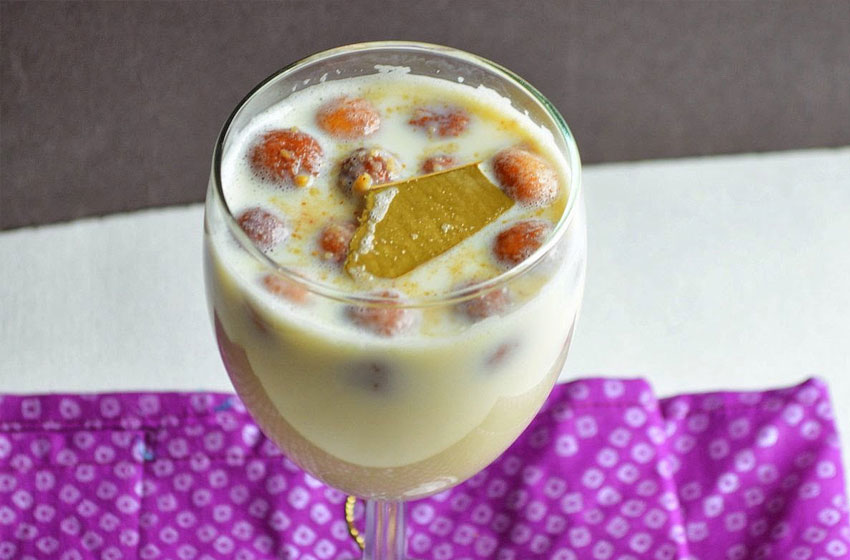
Madhurjan Thongba is a traditional dessert made of besan gram flour dumplings in North-eastern India, especially Manipura. First, mix besan, one teaspoon of sugar, one teaspoon of baking powder, two tablespoons of ghee and a few drops of water. Then, knead the mixture to make a stiff dough.
Heat oil in a pan, make small round pieces of dough (lollipop size), gently drop them into the oil, and fry the dumplings until golden. Remove them once they are done onto a paper towel. Next, boil two to three cups of milk in a saucepan, and add three to four bay leaves, cardamom pods, nuts and sugar (as per your taste).
Let the milk boil for five to eight minutes, keep stirring while adding the little dumplings, cook it for another two to three minutes and add grated coconut.




